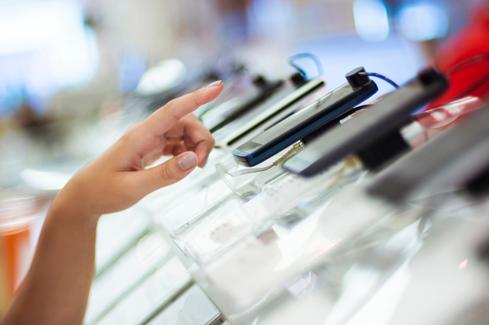E6B Computer: Celebrating 75 Years Of FlightE6B Computer: Celebrating 75 Years Of Flight
The E6B flight computer was introduced to the US Army in 1940. Few devices have been around this long and remain in use today, and we think that's worth celebrating.


Best Mobile Tech Of 2015: Our Top 10 List
Best Mobile Tech Of 2015: Our Top 10 List (Click image for larger view and slideshow.)
Several years ago I had the opportunity to realize one of my lifelong dreams: learning to fly.
At the time, I was living in the Tampa Bay area, which has several small airports and flight schools. After shopping around for a good place to start, I enrolled in a program at Albert Whitted Airport (KSPG), in St. Petersburg, Fla.
During my first ground-school session, the flight instructor introduced me to a curious device. It was a sort of slide rule made out of cardboard, with a round clock-like bezel full of numbers. He called it the E6B Flight Computer.
Until that moment, I thought the word computer only applied to electronic devices that performed calculations. As an electronics engineer, I had used "computers" most of my adult life, and that funny-looking cardboard device was a combination of slide rule and calculation wheel.
The E6B was the result of several years of development by US Naval Lt. Philip Dalton in the late 1930s. When the design was finalized, the device was introduced to the Army in 1940. After the attack on Pearl Harbor, the US Army Air Forces placed its first large order. The E6B was widely used during World War II, with more than 400,000 units built.
[Those were the days, my friends. Read 11 Things Computer Users Will Never Experience Again.]
A flight computer had been developed earlier by Siegfried Knemeyer, a German aeronautical engineer and WWII pilot. However, the E6B is considered the definitive flight computing device.
So, my shopping list to start flight training consisted of the latest FAA rules, a decent aviation headset, a sectional chart, and an E6B Flight Computer.
Over the next six months I familiarized myself with the E6B. The computer is fairly easy to use and allows you to make most of the calculations necessary for flight planning without the need for additional devices.
Later, when I took the required FAA written exam, the only tools allowed during the test were a basic electronic calculator (one that cannot be programmed) and the E6B.
The current E6B looks almost exactly the same as the first one manufactured 75 years ago. The only difference is that lighter materials, such as cardboard, aluminum, and plastic, are now used in place of the original steel.
The front of the E6B features a logarithmic slide rule, which performs basic multiplication and division. The "whiz wheel" performs useful conversions between different units: gallons, miles, kilometers, pounds, minutes, seconds, etc. If you need to calculate the weight of a certain amount of fuel -- for weight and balance -- you simply position the wheel at the exact amount and look at the corresponding value. The front also contains windows for variations when converting calibrated airspeed to true airspeed, or indicated altitude to true altitude.
The back features another slide rule and wheel designed for computing ground speed and wind correction angle. It provides a graphic method of solving problems in trigonometry and displaying the answers in an accessible form.
The basic calculations of the E6B "whiz wheel" are featured on many devices, including some "aviator" watches, such as the Citizen Skyhawk and the Breitling Navitimer. Many E6B emulators are featured on the Internet, and popular apps are available for iPhone, iPad, and Android devices.
Here's an example of an E6B emulator on the iPad:
If science fiction is any indication, the E6B could be around well into the 23rd century. In the Star Trek episode "The Naked Time," Mr. Spock uses an E-6B to calculate the time of impact between the Enterprise and a planet. In the episodes "Mudd's Women" and "Who Mourns for Adonais?" he is again seen holding an E6B.
The E6B is worth celebrating. Few devices have been around this long and are still in use today, and most pilots keep their original E6Bs as a souvenir of flight training.
Have you ever used an E6B? If so, we want to hear all about your experiences in the comments section below.
**Elite 100 2016: DEADLINE EXTENDED TO JAN. 15, 2016** There's still time to be a part of the prestigious information Elite 100! Submit your company's application by Jan. 15, 2016. You'll find instructions and a submission form here: information's Elite 100 2016.
About the Author
You May Also Like






